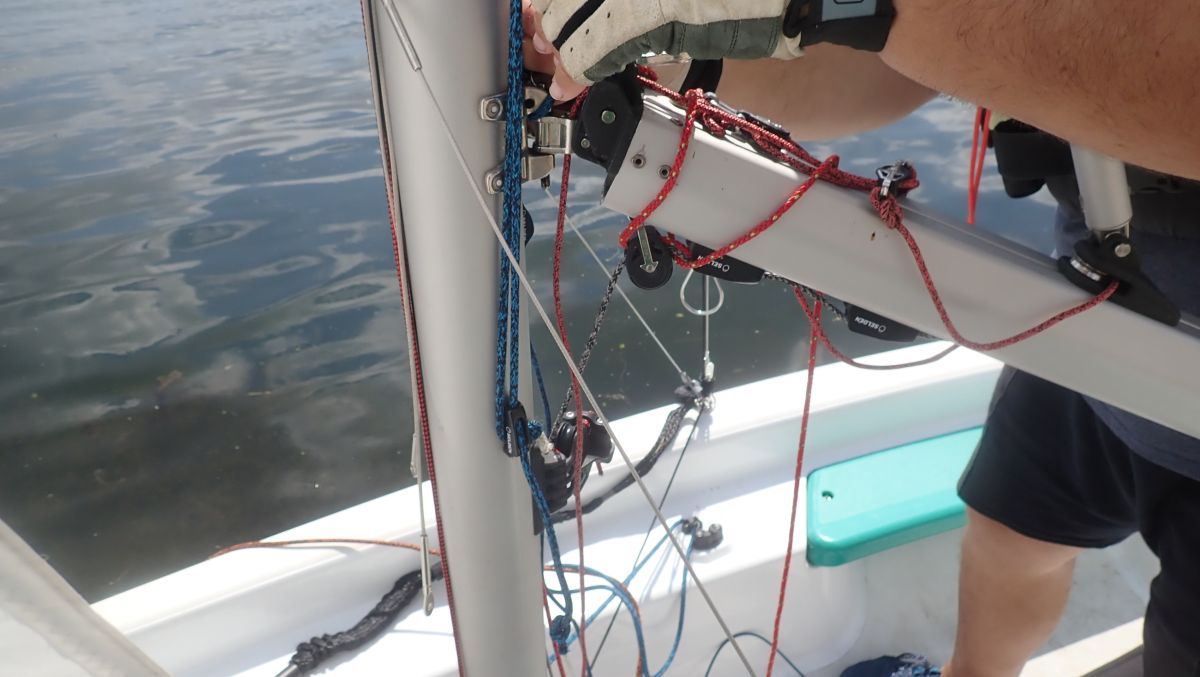Downhaul: A Line Used to Control the Tension on the Luff of the Sail
Definition:
A downhaul is a line or tackle system used on a sailboat to adjust the tension along the luff (the leading edge) of a sail. By tightening or loosening the downhaul, sailors can control the sail’s shape, particularly its draft (depth), which is crucial for optimizing performance in varying wind conditions.
Understanding the Downhaul:
The downhaul is a key sail control mechanism that directly influences how the sail interacts with the wind. By adjusting the tension on the luff, the downhaul can flatten or deepen the sail’s shape. A properly tensioned luff ensures that the sail maintains an optimal aerodynamic profile, allowing the boat to sail efficiently whether in light breezes or strong winds. The downhaul is commonly used on both mainsails and headsails.
How the Downhaul Works:
Tensioning the Luff (Flattening the Sail):
Tightening the downhaul pulls the sail down along the mast, increasing tension on the luff. This flattens the sail, reducing its draft and making it more effective in strong winds by decreasing drag and preventing excessive heeling.
Easing for Power (Deepening the Sail):
Loosening the downhaul reduces the tension on the luff, allowing the sail to become fuller with a deeper draft. This fuller shape is more effective in lighter winds, as it increases the sail’s ability to capture more wind and generate power.
Applications in Sailing:
Upwind Sailing:
The downhaul is particularly important when sailing upwind, where precise sail shape control is crucial for maintaining optimal performance and speed.
Sail Trim:
Adjusting the downhaul is a key part of sail trim, allowing the sailor to adapt the sail's shape to the current wind conditions for maximum efficiency.
Reefing:
The downhaul is also used when reefing the mainsail, helping to secure the sail at a lower position on the mast and maintain the correct sail shape with reduced sail area.
Examples of Usage:
"Tighten the downhaul to flatten the luff and reduce drag as we head upwind."
"In light winds, ease the downhaul to create a fuller sail and increase power."
"The downhaul needs adjustment to maintain the optimal shape of the mainsail."
Visual Representation:
Image Description:
Diagram of a sailboat showing the downhaul attached to the luff of the mainsail, illustrating its role in controlling sail tension.
Importance in Sailing:
The downhaul is a critical tool for controlling the shape of a sail and optimizing its performance. By adjusting the tension on the luff, sailors can fine-tune the sail to suit different wind conditions, ensuring better speed, balance, and control. Proper use of the downhaul is essential for effective sail trim and overall boat performance, particularly when sailing upwind or in gusty conditions.
Related Terms:
Cunningham:
A specific type of downhaul used on the mainsail to fine-tune the luff tension.
Outhaul:
A line used to adjust the tension along the foot of the sail, working with the downhaul to control sail shape.
Halyard:
A line used to hoist or lower the sails, often working in conjunction with the downhaul to control the sail’s vertical position and tension.
Luff:
The leading edge of the sail, where the downhaul is applied to control tension.
Conclusion:
The downhaul is an essential line on a sailboat that allows sailors to control the tension on the luff of the sail. By adjusting the downhaul, you can influence the sail’s shape and performance, making it a key component of effective sail trim. Mastering the use of the downhaul is important for achieving optimal sail efficiency and handling, especially in varying wind conditions.

